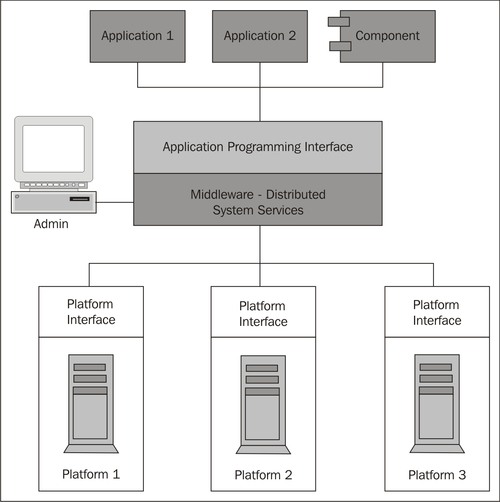Ever wondered how information about the different areas, such as personal, financial, medical, or whatever you can think of, is processed, distributed, and secured in a safe way? The digital, electronic, and complex world today needs good and solid solutions to make sure that they fulfill the needs of our entire society.
You as an IT technician can play an important role in that world. You will have to translate business needs into technical solutions. And business needs are very demanding these days. Computer systems need to be available 24/7 and must deliver a solid environment where no loss of data is allowed.
And in our fast economy, systems need to perform at the top of their abilities, because applications running on them are highly critical and information needs to be delivered in a limited amount of time.
IT technicians play an important role in building a solid solution for all these requirements. In this book, you will discover Oracle's very solid solution, presented as the Oracle WebLogic Server.
Nowadays, middleware is the key component in IT infrastructure. It connects various systems to each other, lets users interact with their applications, and lets them manipulate data. That's why big software vendors, such as Oracle, have a so-called strategic platform for their middleware. Let's take a deeper look into the unveiled secrets of the middleware world!
Middleware is computer software that connects software components, people, and their applications.
The software consists of a set of services that allows multiple processes running on one or more machines to interact. This technology evolved to provide for interoperability in support of the move towards coherent distributed architectures, which are most often used to support and simplify complex distributed applications.
Middleware, as the name suggests, sits "in the middle" of the application software that may be working on different operating systems. It is similar to the middle layer of three-tier single system architecture, except that it is stretched across multiple systems or applications. Examples include EAI software, telecommunications software, transaction monitors, and messaging-and-queuing software.
Before the introduction of middleware platforms, applications had isolated programs running on isolated computers. As an administrator, if a new version of the program came out, you had to go by every client computer to update or reinstall the software.
Also, when problems occurred, it was very hard to determine what the cause was, because all resources ran locally on the client machine, each with their own settings and configurations. Later on, things got more evolved by pushing software from a central store to the client PCs, but still they ran isolated, and was very difficult to administer.
With the upcoming Internet during the 90's, applications also began to evolve from client computers into centralized environments, accessed through a web browser, such as Internet Explorer. The birth of middleware environments was a fact, and more and more different vendors began to develop their own strategic platforms.
There is no strict definition of a middleware environment, but in general one can say: middleware is software that connects components, systems, users, and their applications. It includes web servers, application servers, and other tools that provide application development, deployment, execution, and delivery. Middleware is able to handle all kinds of information technology based on XML, SOAP, web services, and SOA.

An Application Server plays the key role in a middleware environment. In fact, this is the platform that connects all systems with each other, with the many plugins, resources, and other interfaces that the Application Server delivers.
Oracle WebLogic implements the JEE standards. JEE is the standard for JAVA Server programming and runtime JAVA.
JEE has a wide variety of APIs (Application Programming Interface) in it, such as JDBC, RMI, e-mail, JMS, web services, XML, and more. These components are also part of the WebLogic Server environment and will be discussed in the coming chapters. JEE also features some specifications for components that are unique to Java EE. Besides leveraging the APIs, JEE also contains Enterprise JavaBeans, connectors, servlets, portlets, Java Server pages, and several web service technologies. This allows developers to create enterprise applications that integrate with legacy technologies.
A Java EE application server can handle transactions, security, scalability, concurrency, and management of the components that are deployed to it, in order to enable developers to concentrate more on the business logic of the components rather than on infrastructure and integration tasks.
